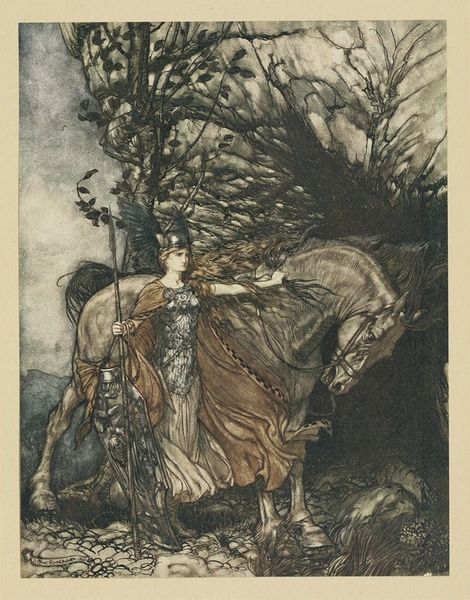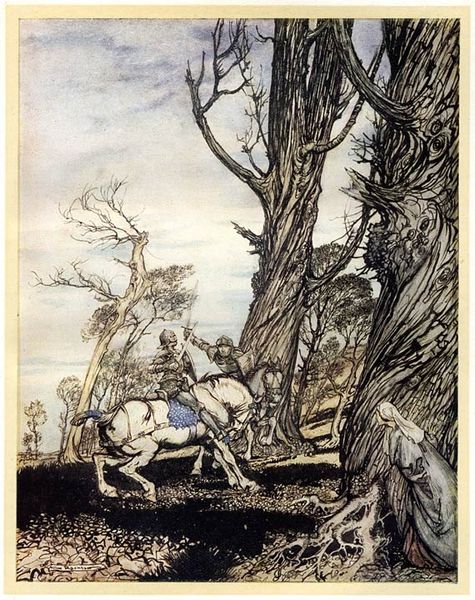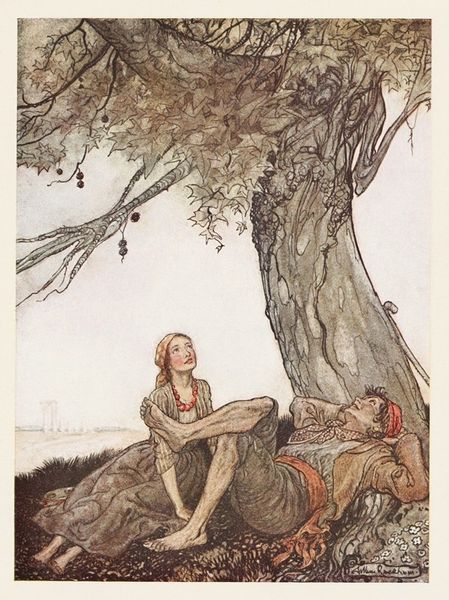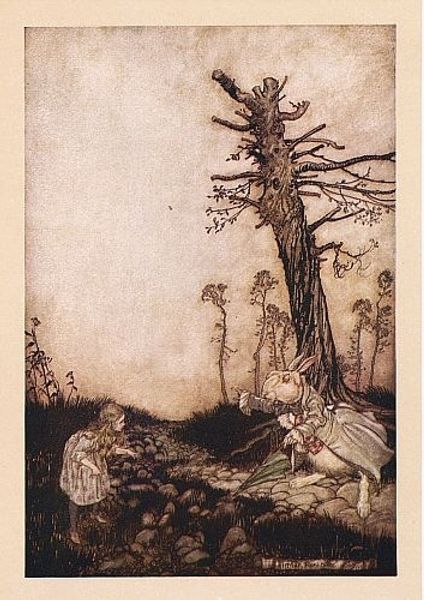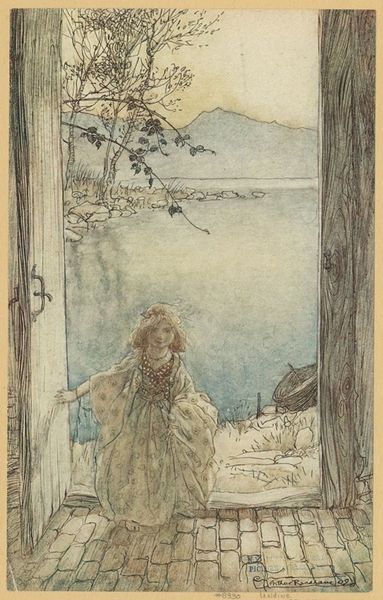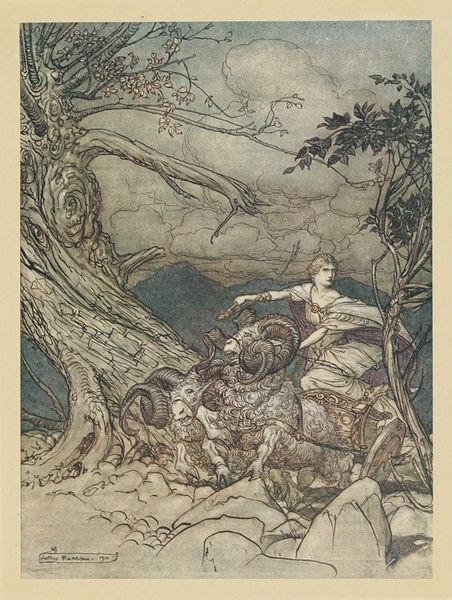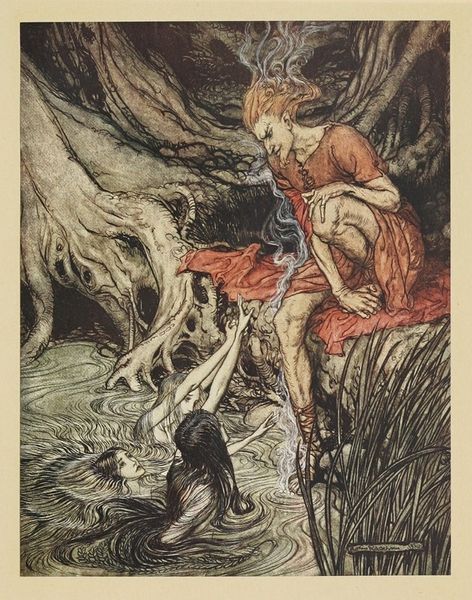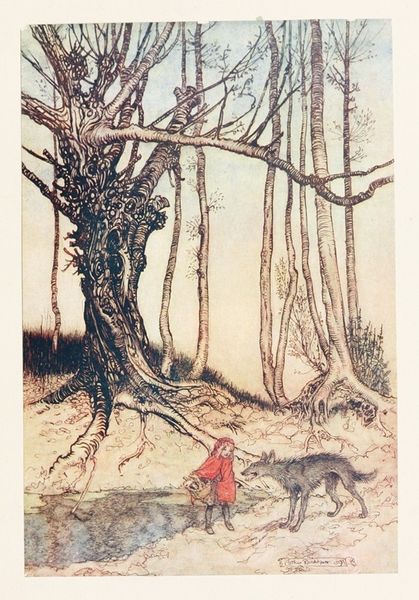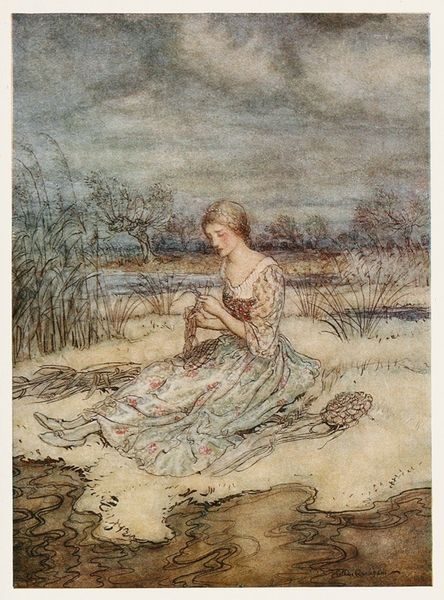
Now we will go up the hill and have a good feast before the squirrel carries off all the nuts 1920
0:00
0:00
Copyright: Public Domain: Artvee
Editor: So, this is "Now we will go up the hill and have a good feast before the squirrel carries off all the nuts," a watercolor and ink drawing by Arthur Rackham, from 1920. It has a wistful quality...a fable perhaps? What story do you think Rackham is telling us here? Curator: Fairy tales, fables, and folklore often carry wisdom traditions, teaching moral lessons. But these characters...a squirrel perched high, the hen and rooster below…They appear to be engaged in some secretive, urgent undertaking. Rackham skillfully uses anthropomorphism. What emotions are projected onto the animals? Editor: Definitely a sense of purpose, even anticipation. But the squirrel also looks a bit mischievous, like it knows something the others don't. Is that squirrel perhaps an old trickster archetype, present in many cultures? Curator: Precisely! Think of Anansi the spider or Coyote in Native American tales, figures who are both clever and disruptive, embodying the chaotic elements within human nature. The "nuts" could be a symbolic representation of stored knowledge, community resources, or even opportunities that need safeguarding. Consider how cultural anxieties, especially after the first World War, may have found their way into Rackham's visual language. Editor: So, the squirrel isn't just stealing nuts, it's potentially disrupting the whole social order? And the hill representing ascension and labor, while the feast promises rewards – all symbols tied to communal memory? Curator: Indeed! Rackham is drawing on a rich symbolic language here, one that taps into shared understandings of greed, labor, and community well-being, speaking to something elemental and enduring within us all. Editor: It’s incredible how much meaning can be packed into what seems like a simple illustration. It encourages one to ask not just what is being depicted, but also, what are the underlying cultural meanings? Curator: Rackham is brilliant in that he forces us to revisit assumptions about innocence, agency, and moral obligation by rendering familiar images within unfamiliar contexts. What at first appeared cute is actually rife with human pathos.
Comments
No comments
Be the first to comment and join the conversation on the ultimate creative platform.


